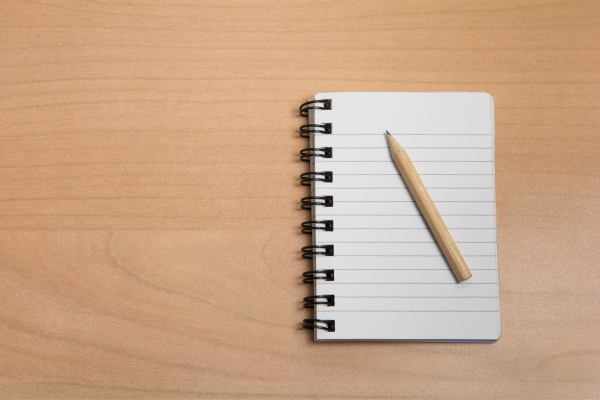
Last week, I was chatting with a student who obviously thought that what I was saying was useful. Goodness me. I was so helpful, apparently, they wanted to make a note of what I had just said. They brought out their phone and then started stabbing at the screen. When I thought they had finished, I carried on talking, only to have the student hold their hand up to stop me as they hadn’t finished typing. I sat there thinking that it would have been quicker just to open the recording app and ask me to restate my point.
In the past, students would only have had one option: to write down what I had said in their notebooks. Now, there are dozens of options to make notes. Indeed, even good, old-fashioned notebooks are complicated these days. You can buy printed notebooks with multicoloured tabs, for example, or you can get them with stickers to signify specific points. Notebooks are now available with lines, squares, plain paper, or dots. You can choose how thick the paper is, or what colour the pages are. When I was at school, all you had was an “exercise book” with lines on it and a “rough book” that was plain paper. Now, it seems, the choice for a paper notebook is almost limitless.
And that’s not all. There are various digital methods of taking notes. There are dedicated apps, such as Apple Notes, Evernote, Google Keep, Microsoft OneNote, Notion and Obsidian. Some systems allow you to combine digital and physical note-taking, such as Moleskine Digital or Livescribe. There is even a system, called RocketBook, that enables you to have only one notebook that takes endless notes, which are digitally captured thanks to its “write on, wipe off” surface. They also have a notebook that you put in the microwave to erase the ink from the real paper pages – honestly…!
Nowadays, it is inevitable that you can use artificial intelligence to take notes for you. For instance, Plaud is a portable recording device that listens for you and then creates summary notes of the meeting you have been to. I suspect you are already using AI, possibly with automated transcripts and summaries, when you have online meetings using Microsoft Teams or Zoom. If you’d like, you can use a tool like AudioPen to convert any audio into structured notes.
As if this were not enough, last week the folks over at reMarkable introduced their latest note-taking device, the reMarkable Paper Pro Move. In case you haven’t heard of reMarkable, these are digital devices that you write on. However, their screen technology means it feels like you are using paper. I have tried one of these machines and, indeed, they are remarkable. Now, their latest device is more portable and early reviews are excellent.
However, as fantastic as such devices are (and they are very clever), there are problems. The first is the amount of choice. There is so much choice now as to how you can take notes that “choice paralysis” is setting in. Not only do you have to choose between digital, paper, or a combination of the two, but there are numerous digital options, making it confusing. Even the choice of paper note-taking options is too wide. For instance, there are 9,000 paper notebooks to choose from on Amazon.
The second problem is that taking notes itself is an issue. Indeed, research from over a decade ago suggests that when we take notes, we remember less than if we did not write anything down in the first place. In other words, note-taking hinders memory formation. Writing notes is something of an illusion. We think we are doing it to help us remember important points. The reverse is actually true – we remember less when we take notes during meetings.
It turns out that our brain appears to stop trying to remember because it knows we are allowing it a break from attempting to do that by writing things down. It is the usual path of brain activity, constantly trying to reduce the amount of effort required. Psychologists have long demonstrated this ‘offloading effect’, where our brains stop focusing on details when we believe they’ve been captured elsewhere. If you give up note-taking to AI, then your brain is going to thank you even more for your support in reducing the work it needs to do.
But there is one significant problem in all this. If AI is taking our notes, storing them and doing all the work, our brains will make no effort to think about what is going on. That means we’ll have digital notes on all kinds of things which we will not even recall in the first place. Which begs the question, what is the point of the automated note-taking? We will end up with archives of material that we will not even be able to acknowledge exists. Yet, if you attended a meeting, didn’t take notes, and had no note-taking system, the psychology is clear: you would remember a great deal.
